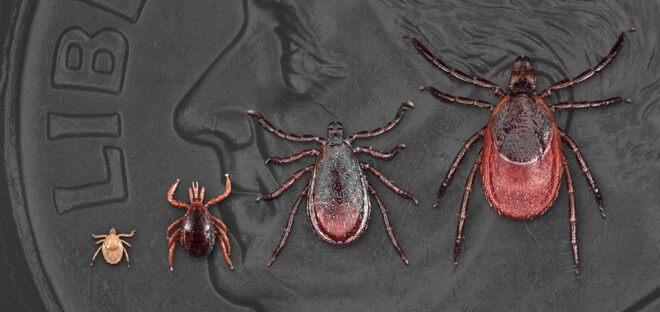In the realm of health concerns, Lyme disease has garnered significant attention due to its stealthy nature and potential long-term consequences. This article aims to provide a comprehensive understanding of how Lyme disease is contracted, its symptoms, and how to identify them. By delving into the intricacies of this condition, we hope to shed light on its prevention and management.
Table of Contents
- Understanding Lyme Disease: An Overview
- What is Lyme Disease?
- The Culprit: Borrelia Burgdorferi Bacteria
- Transmission of Lyme Disease
- Tick Vectors: The Primary Transmitters
- High-Risk Areas: Where Lyme Disease Thrives
- Seasonal Variation in Transmission
- The Culprits: Ticks and Their Stealthy Ways
- Tick Life Cycle: A Primer
- The Feeding Process: How Ticks Transmit Infection
- Recognizing the Symptoms of Lyme Disease
- Early Signs and Symptoms
- The Notorious Bullseye Rash
- Secondary and Late-Stage Symptoms
- Diagnosis and Medical Evaluation
- Clinical Assessment and Patient History
- Laboratory Testing: Confirming the Diagnosis
- Differential Diagnoses: Ruling Out Other Conditions
- Treatment Approaches
- Antibiotics: The Primary Line of Defense
- Treatment Stages: Early vs. Late Diagnosis
- Addressing Chronic Lyme Disease: Ongoing Challenges
- Prevention Strategies
- Navigating Tick-Prone Areas Safely
- Protective Clothing and Repellents
- Regular Tick Checks: A Crucial Habit
- The Debate and Controversies
- Chronic Lyme Disease: Validity and Implications
- Alternative Treatment Approaches: Sorting Facts from Fiction
- Raising Awareness: Public Health Initiatives
- Education and Spread of Awareness
- Collaborative Efforts: Combating Lyme Disease as a Community
- Personal Stories: Lyme Disease Impact
- Narratives from Individuals Affected
- Overcoming Challenges and Inspiring Hope
- Research and Advancements
- Tracking the Progress in Lyme Disease Research
- Promising Treatments on the Horizon
- Living with Lyme Disease: Coping and Support
- Lifestyle Adjustments and Self-Care
- Mental Health Considerations
- Conclusion
- Knowledge as Empowerment: Staying Vigilant Against Lyme Disease
Understanding Lyme Disease: An Overview
Lyme disease, caused by the Borrelia burgdorferi bacteria, is a vector-borne illness primarily transmitted through ticks. Ticks serve as the main culprits, with their bites facilitating the transmission of the bacteria into the human bloodstream.
Also, read How Can I Make My Business Grow Faster?
Transmission of Lyme Disease
Ticks, particularly the black-legged ticks (Ixodes scapularis and Ixodes pacificus), thrive in grassy and wooded areas. Regions with dense deer populations are especially high-risk zones due to the ticks’ affinity for these animals. The transmission occurs when an infected tick latches onto a host, often remaining unnoticed during its feeding process.
The Culprits: Ticks and Their Stealthy Ways
Ticks undergo a complex life cycle involving larval, nymphal, and adult stages. Nymphs, tiny and challenging to detect, are responsible for a significant portion of Lyme disease cases due to their seasonal activity coinciding with outdoor human endeavors.
Recognizing the Symptoms of Lyme Disease
Early symptoms of Lyme disease include fatigue, fever, headache, and muscle and joint aches. However, the hallmark indicator is the erythema migrans rash, commonly referred to as the bullseye rash. As the disease progresses, it can lead to more severe symptoms, affecting the joints, heart, and nervous system.
Diagnosis and Medical Evaluation
Diagnosing Lyme disease involves a combination of clinical evaluation, patient history, and laboratory tests. The bullseye rash often aids diagnosis, but in its absence, doctors rely on blood tests to confirm the presence of the bacteria.
Must Read What is ChatGPT and how it works?
Treatment Approaches
Antibiotics are the primary mode of treatment for Lyme disease. Early diagnosis and prompt treatment are crucial to prevent the progression of the disease. However, there’s ongoing debate regarding chronic Lyme disease and its management, with some cases requiring extended treatment regimens.
Prevention Strategies
Preventing Lyme disease involves avoiding tick-prone areas, wearing protective clothing, and using insect repellents. Regular tick checks after outdoor activities can help in the early removal of ticks before they transmit the bacteria.
The Debate and Controversies
Controversies surrounding Lyme disease range from the validity of chronic Lyme disease as a medical condition to the effectiveness of alternative treatments. Distinguishing evidence-based approaches from misleading information is essential.
Raising Awareness: Public Health Initiatives
Educational campaigns and community efforts play a vital role in raising awareness about Lyme disease. Collaboration between healthcare providers, researchers, and the public is crucial in curbing the spread of the disease.
Personal Stories: Lyme Disease Impact
Personal narratives from those affected by Lyme disease offer insights into the challenges and triumphs they experience. These stories highlight the importance of early detection, proper treatment, and emotional support.
Research and Advancements
Ongoing research continues to uncover new aspects of Lyme disease, from improved diagnostic methods to potential vaccines. These advancements offer hope for more effective prevention and treatment strategies.
Living with Lyme Disease: Coping and Support
Living with Lyme disease requires lifestyle adjustments and self-care measures. Additionally, addressing the mental health aspects of the condition is essential for overall well-being.
Conclusion
Lyme disease remains a complex and evolving challenge. Armed with knowledge about its transmission, symptoms, prevention, and treatment, individuals can take proactive steps to safeguard their health in tick-prone environments.
FAQs About Lyme Disease
- Can you get Lyme disease from pets? While pets can carry ticks indoors, Lyme disease is primarily transmitted through tick bites on humans.
- Is chronic Lyme disease widely recognized by the medical community? Chronic Lyme disease remains a topic of debate within the medical community due to differing opinions on its existence and diagnosis.
- Can Lyme disease be fatal? In rare cases, if left untreated, Lyme disease can lead to severe complications affecting the heart, nervous system, and joints.
- Are there natural remedies that effectively treat Lyme disease? The effectiveness of natural remedies for Lyme disease is not scientifically proven, and medical treatment with antibiotics remains the standard approach.
- Is a Lyme disease vaccine available? While there was a Lyme disease vaccine in the past, it was discontinued. Research on new vaccines is ongoing but not yet widely available.
Please note: Always consult a qualified healthcare professional for accurate medical advice and information.

